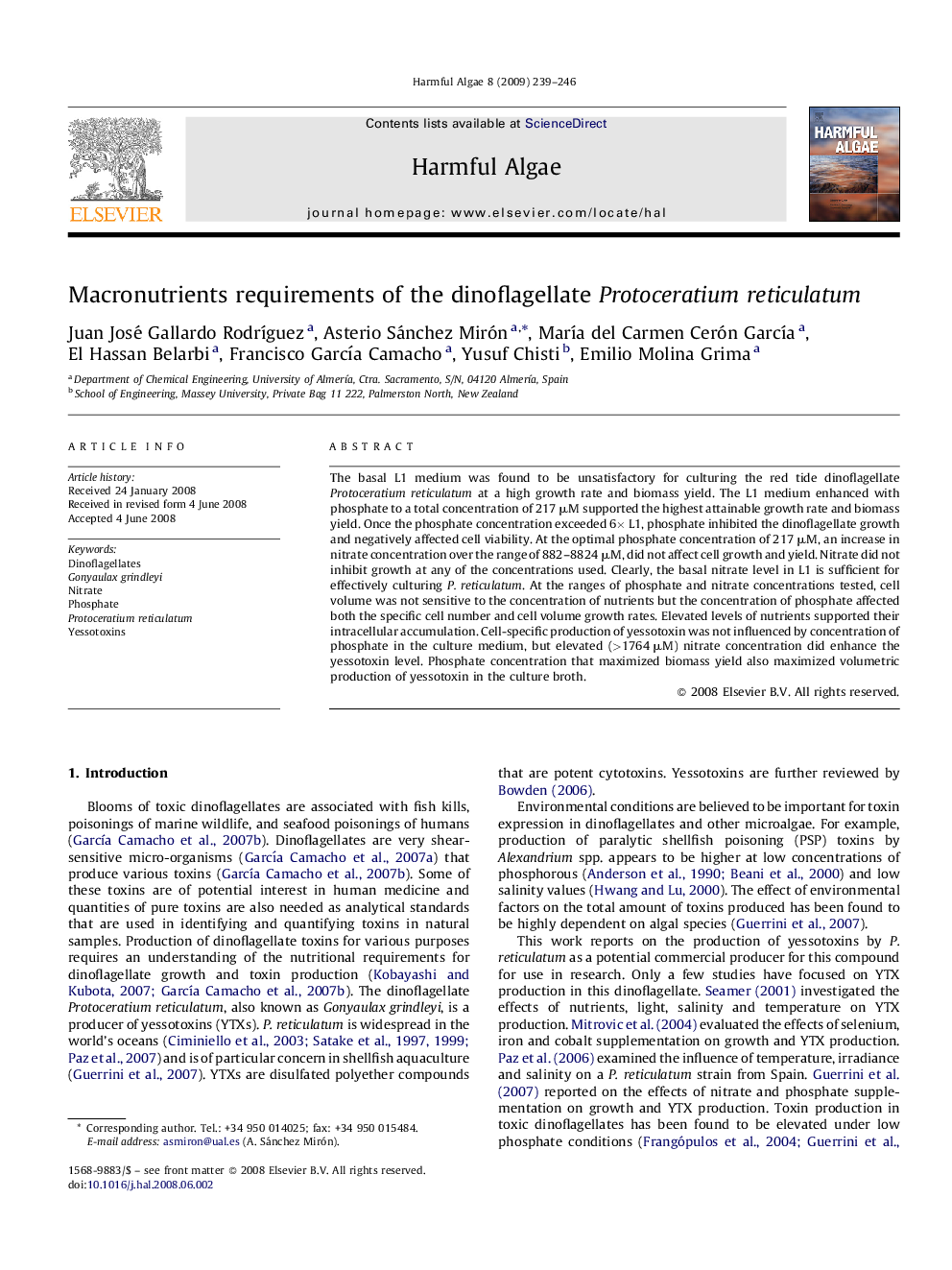| Article ID | Journal | Published Year | Pages | File Type |
|---|---|---|---|---|
| 4545890 | Harmful Algae | 2009 | 8 Pages |
Abstract
The basal L1 medium was found to be unsatisfactory for culturing the red tide dinoflagellate Protoceratium reticulatum at a high growth rate and biomass yield. The L1 medium enhanced with phosphate to a total concentration of 217 μM supported the highest attainable growth rate and biomass yield. Once the phosphate concentration exceeded 6à L1, phosphate inhibited the dinoflagellate growth and negatively affected cell viability. At the optimal phosphate concentration of 217 μM, an increase in nitrate concentration over the range of 882-8824 μM, did not affect cell growth and yield. Nitrate did not inhibit growth at any of the concentrations used. Clearly, the basal nitrate level in L1 is sufficient for effectively culturing P. reticulatum. At the ranges of phosphate and nitrate concentrations tested, cell volume was not sensitive to the concentration of nutrients but the concentration of phosphate affected both the specific cell number and cell volume growth rates. Elevated levels of nutrients supported their intracellular accumulation. Cell-specific production of yessotoxin was not influenced by concentration of phosphate in the culture medium, but elevated (>1764 μM) nitrate concentration did enhance the yessotoxin level. Phosphate concentration that maximized biomass yield also maximized volumetric production of yessotoxin in the culture broth.
Related Topics
Life Sciences
Agricultural and Biological Sciences
Aquatic Science
Authors
Juan José Gallardo RodrÃguez, Asterio Sánchez Mirón, MarÃa del Carmen Cerón GarcÃa, El Hassan Belarbi, Francisco GarcÃa Camacho, Yusuf Chisti, Emilio Molina Grima,
